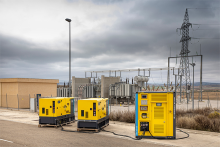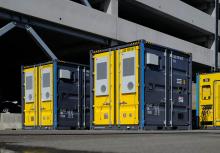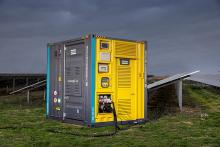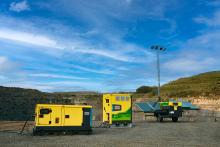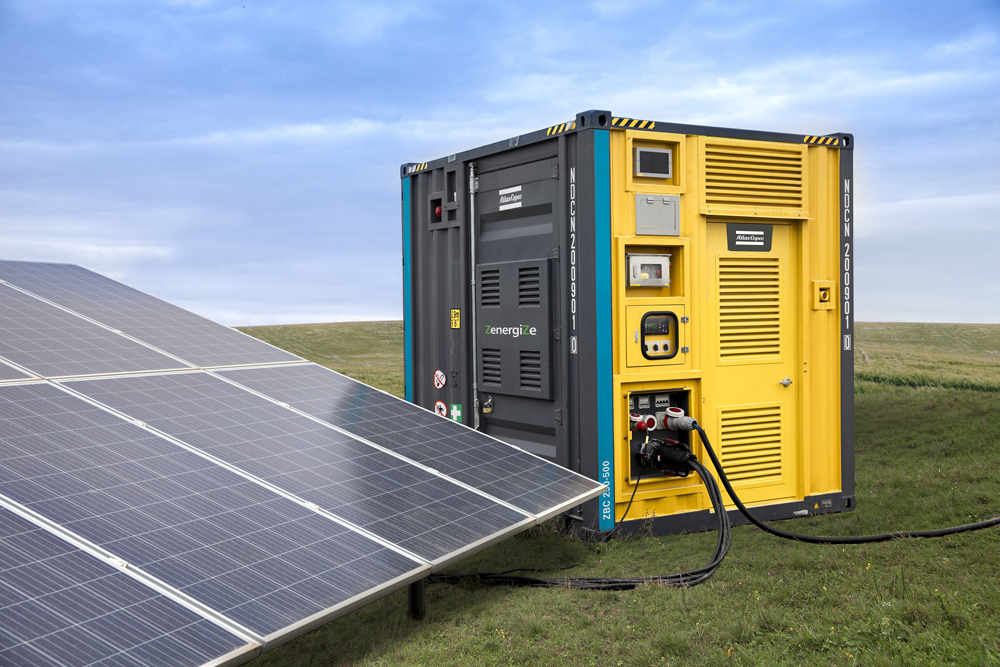
The aggregates industry is at a turning point when it comes to embracing sustainability. According to research website Our World in Data, 10.6% of energy-related greenhouse gas emissions originate from manufacturing in industries including quarrying and mining, construction, textiles, wood products, and transport equipment.
Bárbara Gregorio, product marketing manager – innovative energies & digital solutions at Atlas Copco’s Power and Flow Division, says that both quarrying and construction operators have to balance the increasing pressure to take steps to address the issue with the need to optimise efficiency and remain competitive.
“For a long time, the very nature of quarry sites, which are often off-grid and sometimes remote, has meant that they have had to rely exclusively on generators to power and start vital equipment,” says Gregorio. “The European Stage V emissions standards have already set tighter emission restrictions on diesel engines in non-road mobile machinery to improve air quality. Now, li-ion battery energy storage solutions provide new, greener ways to complement the generator’s power.”
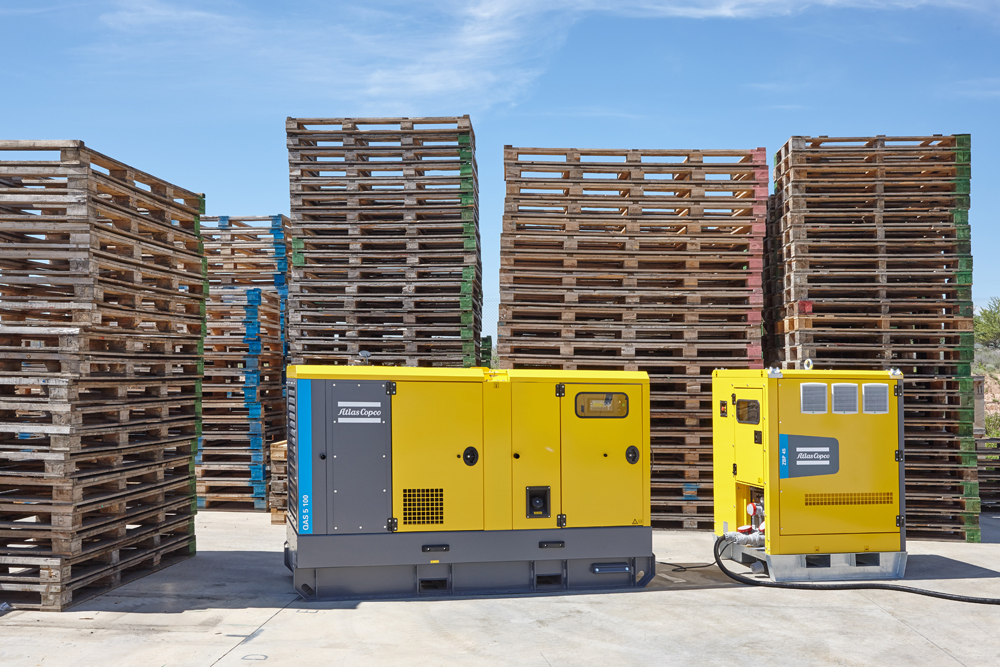
She adds that high-density lithium-ion batteries, such as those used in Atlas Copco’s ZenergiZe lithium-ion energy storage units, are lighter and much more compact than traditional alternatives, yet able to provide over 12 hours of power with a single charge. They are not designed to replace a generator as their primary function is different: a battery stores energy while an engine generates it. However, they are ideal for making the use of generators more flexible and energy efficient.
Gregorio says that one of the greatest benefits of battery energy storage solutions is their capability to store energy from renewable sources, such as solar panels, for use when grid power is unavailable, or the use of a generator is unsuitable.
“This opens up several new applications on-site, from being the sole source of power for low-load equipment, such as telecoms antennas, to working together with a generator to enable electric vehicle (EV) and electric tool charging stations,” she says.
“In the ideal case, the batteries can serve as the standalone power solution when combined with a renewable source. The ZenergiZe unit, for example, can enable a 100 percent reduction in CO2 emissions compared to a generator when used as a standalone power solution in the island mode.”
Li-ion battery storage solutions offer operators several simple ways to make the use of generators more efficient, practical, and environmentally friendly. Gregorio says that benefits are also felt outside the quarry site, as any steps taken to reduce noise and minimize CO2 emissions can help ensure a good relationship with the surrounding community and protect the brand image.
“That is why forward-thinking constructors are already taking steps to make ESS part of their site’s power network to manage peak power requirements and work towards achieving three zero operation, with zero emissions, zero noise, and zero maintenance,” Gregorio adds.
Atlas Copco has now introduced ZBC, the latest model in the ZenergiZe range. It can be used as a standalone source, combined with generators to make a hybrid power solution or renewable sources of energy as well as to create microgrids. The new ZenergiZe is designed as an ideal solution for demanding applications that require a constant and significant flow of electrical energy.
The ZenergiZe ZBC range offers rated power from 100kVA to 1000kVA and an energy storage capacity of 250kWh and 2000kWh depending on the model, to deliver high power with long autonomy.
Atlas Copco has officially announced Power Technique as the new name of its Construction Technique business area. The company says Power Technique has been chosen as the name because power is recognised by customers as the integral characteristic of the core product categories in the portfolio – air, power (including light) and flow. The business area will serve multiple customer segments including construction, industrial, drilling, oil and gas and petrochemicals. The change is effective immediately.
Moving forward, the manufacturer says the Power Technique business area will offer a core portfolio of products including portable compressors, generators, light towers and pumps along with dedicated construction products including handheld pneumatic, electric and hydraulic tools and compaction and concrete products. In addition, it will continue to provide products and customised solutions for drilling, oil and gas and geothermal exploration applications, among many others.

UK-based JCB has introduced its first Rental Series (RS) generator set with EU Stage V power, which the UK manufacturer says offers customers increased prime output with reduced emissions. The G40RS V replaces the Stage IIIA G36RS model, delivering 40kVA at 50Hz frequency.
The G40RS V rental generator set is a transportable power-generation system that has been designed to work in the harshest rental environments. Built on an over-gauge base frame, with a 2mm thick Galvtec steel canopy, the G40RS V has a 40mm fixed single lift point, four base-frame lifting points and integrated fork pockets, for rapid deployment to site. The integrated fully-bunded fuel tank is compliant with the European ADR standards for safe road transport, and the canopy has vertical hot air discharge vents, to reduce noise and prevent dust swirl around the set on-site.
The generator is powered by a JCB by Kohler KDI 2504 TCR four-cylinder turbocharged engine, developing 42.4kW (57hp). This uses a single-can diesel oxidation catalyst (DOC) and diesel particulate filter (DPF), that is mounted in front of the radiator to retain slim canopy dimensions. The DOC is maintenance-free and the DPF is regularly cleaned using regeneration. The regeneration strategy has been designed to maintain optimal machine operation, even at low loads and temperatures, maximising uptime for the customer.
Large, lockable doors enable easy access to all service points and routine service intervals are set at 500 hours. All replaceable filters are located on the cold side of the engine, while a lift-off panel provides access to the cooling pack, load bank elements and the DOC/DPF canister. JCB says there is no requirement for selective catalytic reduction (SCR) or diesel exhaust fluid (AdBlue).
The G40RS V can be supplied with DSE7310 or DSE8610 (synch) controllers to provide an industry-familiar control environment. A four-pole Schneider circuit breaker is standard and there is an emergency stop button mounted on the canopy, adjacent to the control section. All controls are located behind a lockable door with viewing window and are shielded from the engine compartment.
The optional DSE8610 synch controller is designed to allow the G40RS V to be easily connected to other machines, to deliver flexible, adaptable power as required. JCB LiveLink telematics provide standard remote monitoring, in effect placing a virtual engineer with every RS generator set on-site. The ADR-compliant fuel tank provides a minimum of 24-hours operating autonomy and the lifting points have been designed to allow fully-fuelled delivery.
JCB comments on the new RS generator set: “With clean Stage V power, common DSE control systems and premium MeccAlte alternators, in a proven robust yet compact package, the G40RS V leads the way for Stage V adoption in the JCB Power Products Rental Series generator line-up.”
Power-systems supplier Kohler has launched its M139 generator canopy. The company says it offers high levels of anti-corrosion performance, making it suitable for use in harsh outdoor environments in markets such as Africa and the Middle East.
The M139 integrates powers from 165 kVA to 250 kVA. It completes the redesign of canopies for Kohler’s industrial range, with the previously released M137 and M138 covering 22 to 130 kVA.
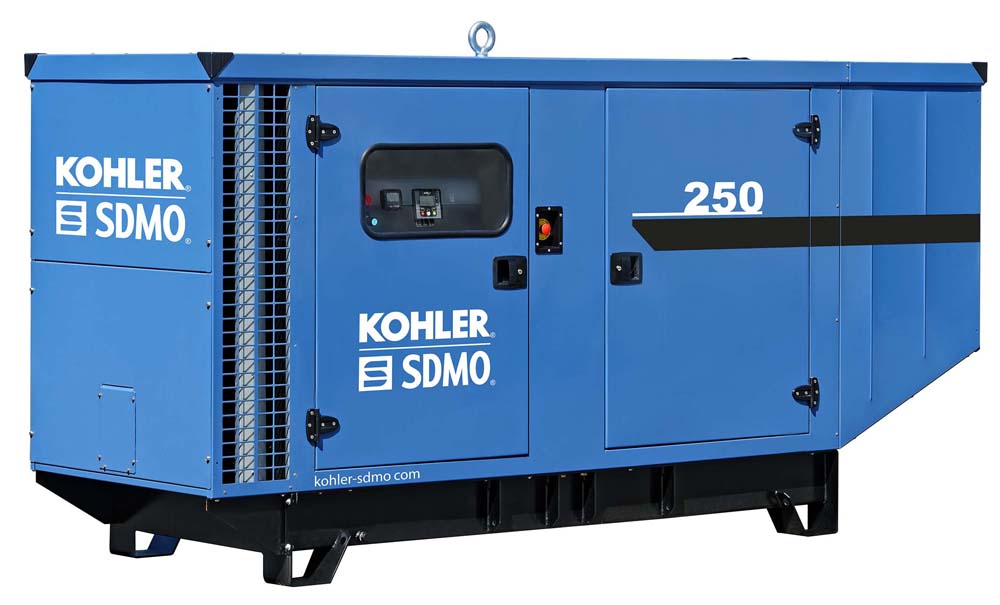
The canopy is made from aluminium-zinc coated steel, which is designed to provide superior protection against corrosion compared with standard galvanised steel. Tests at the French Corrosion Institute near Kohler’s headquarters in Brest, northwest France, showed that the M139 continued to provide resistance up to 1,500 hours in a climatic chamber under salt-spray conditions.
The company says the design of the M139 has also resulted in the removal of certain welds, eliminating water traps that can accelerate the spread of rust.
“The M139 canopy integrates generators for prime and back-up electricity production in global markets, and it will find application in a broad range of small industry and retail settings,” said Kevin Bougault, product manager for the small diesel range at Kohler.
Other design advantages include grooved sheets to provide additional structural solidity of the canopy, therefore reducing vibration. The M139 also comes with a chamfered roof and plastic finishing on the corners, providing additional protection.
“Durability was a crucial factor from the outset,” said Bougault. “Our designers and engineers worked closely with first-class suppliers to ensure the production of a canopy that is built to last.”
Kohler states that day-to-day practicality was also an important consideration. The M139 features a door at the front and a double-sized panel on the side for ease of access for maintenance teams. An oculus on the door provides clear visibility of the generator control panel, and the M139 also features a lifting eye as standard so that it can be easily hoisted from the top.
The M139 will be offered to global markets through an extended distribution network, providing delivery within two weeks.

